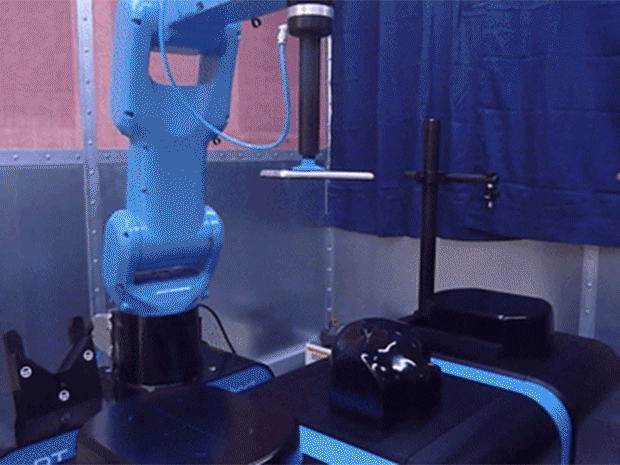Testing the Internet of Things
A peek inside Silicon Valley’s newest IoT test center
That tsunami of new IoT gadgets? They all have to be tested before they roll out into the world, not only to meet government regulations but to verify adherence to a host of voluntary standards, like WiFi, Bluetooth, ZigBee, Thread and others. That is a lot of testing. And that’s why TUV Rheinland recently opened a huge Silicon Valley test facility in Fremont, Calif.
It’s important for testing to be near the design teams, says TUV Rheinland’s Sarb Shelopal, the company’s global director of wireless and IoT testing. Distance, he says—and Silicon Valley’s traffic—is a big deal when companies are trying to move fast.
“Typically at the testing point,” says Shelopal, “a product team typically involves eight to ten people, but could be as big as 100, including safety engineers, software engineers, and hardware engineers. And when a product isn’t passing, we need to get them all in, and they will change this piece of hardware or this bit of software.”
Many of the tweaks, he said, can be made on site, with companies only having to go “back to the drawing board if they have a huge flaw in their design.”
TUV Rheinland’s Silicon Valley test center can test for compliance with the electromagnetic compatibility requirements set by the U.S. Federal Communications Commission and similar entities in other countries, such as the Conformité Europeéne and Industry Canada; that is, making sure the electromagnetic emissions of a product fall within set limits and don’t interfere with other products. It can also test for wireless interoperability for various standards, like WiFi and Zigbee, that is, making sure that a new mobile device works with other products designed to that standard. It can also perform SAR testing. (SAR, or Specific Absorption Rate, is a measure of the rate at which the body absorbs RF energy; governments specific limits for certain products, like mobile phones. It’s performed using models of humans filled with goo to simulate brain or body tissue.) The center can also test medical devices, for safety and immunity from interference.
Shelopal said, the facility can qualify devices to operate in a number of countries besides the United States, including Canada, Japan, Korea, Taiwan, and Europe. (Some other countries, such as Brazil and China, require that compliance testing be performed locally.)
The boom in IoT products coming out of Silicon Valley means that the center has been busy since it opened in March, Shelopal says, running two shifts a day right now and getting ready to test around the clock starting in September. It has put hundreds of products through their paces to date, and, he says, demand will grow. “It used to be that testing just involved FCC compliance and safety,” he says, “things like TVs and toasters. Now, due to the IOT boom, many devices use a radio to connect and have more complex technology than in the past.” And that means more designs that will need to be tested.
The tests will have to evolve with the technology, of course. Today’s head-and-hand mannequins, used to test phones, won’t be sufficient for tests of smart clothing. Here’s what it looks like inside TUV Rheinland’s Fremont test center today:
This massive door leads to the main RF testing chamber, where products as small as a wearable and as large as a car can be tested at a distance of up to 10 meters. Sarb Shelopal, TUV Rheinland’s global director of wireless and IoT testing, is at the controls.
Shelopal enters the main RF testing center; where RF absorbers line the walls.
Electrostatic testing gear simulates the kind of charge a device can get when a person touches it, and surge testing simulates a lightning strike. “We inject high voltage into the power supply to see if it blows up,” explains a test engineer.
In the over the air testing chamber, test engineers monitor the sensitivity of mobile devices and the power of the signals they emit, to make sure they meet the requirements of the U.S. CTIA and other standards bodies.
Dummies—test engineers call them phantoms—are filled with gels that mimic brain and body tissue and help measure the amount of radio frequency energy a person would absorb in a set period of time—the Specific Absorption Rate (SAR). This SAR-testing robot can perform each test in about 10 seconds.
A traditional, manual SAR testing device can perform the same tests as the SAR robot, at about 30 minutes per test.
This phantom head and hands can be positioned to hold a mobile phone in any way a human user would.
Tekla S. Perry is a senior editor at IEEE Spectrum. Based in Palo Alto, Calif., she's been covering the people, companies, and technology that make Silicon Valley a special place for more than 40 years. An IEEE member, she holds a bachelor's degree in journalism from Michigan State University.
